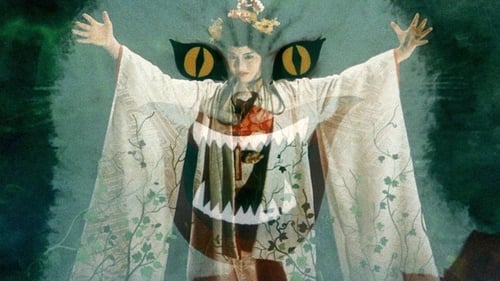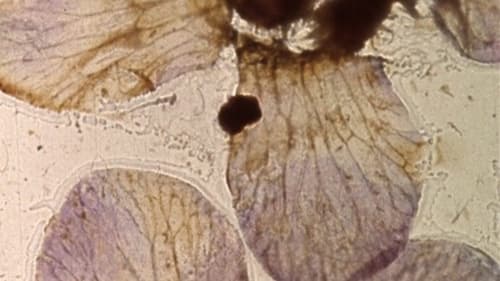IMÁGENES CAPITALES
장르 : 다큐멘터리
상영시간 : 0분
연출 : Nicolás Fernández-Montes
시놉시스
Two friends dreaming

제이슨이 결코 죽지 않았다고 믿는 토미(Tommy : 톰 매튜스 분)는 시체를 완전히 없애버리려고 그가 묻힌 묘지에 간다. 그의 관을 열었을 때, 그의 시체는 온갖 벌레들로 썩고 있었다. 이때 토미가 제이슨의 시체에 찌른 지렛대에 번개가 맞아 놀랍게도 제이슨이 다시 살아나게 된다. 제이슨에게 간신히 도망친 토미는 지역 보안관에게 경고를 하면서 도움을 요청하나, 오히려 정신병자로 취급당해 유치장에 갇히게 된다. 크리스탈 캠프는 이제 지명마저 바뀌어 평온하게 되었으나 제이슨은 옛 기억을 살려 캠프로 향하면서 눈에 띄는대로 무참히 살육을 감행한다. 어린이들이 여름 캠프을 오고, 제이슨은 캠프 교사들을 살해하고 아이들까지 위협한다. 토미는 제이슨을 호수 밑에 잠재울 계획을 짜고 보안관의 딸 메건(Megan : 제니퍼 쿠키 분)의 도움을 받아 제이슨을, 큰 돌덩어리을 맨 쇠사슬에 묶어 호수 밑에 가라앉게 하는데 성공하지만...

Takashi Makino’s source of inspiration, our place in the world and the universe, never seems to dry up in view of the never-ending flow of immersive films. Generator may well be the earthiest of his films so far, made as a reaction to the Fukushima disaster. A reality check, but in the world that Makino shows, this can never be achieved without looking inwards too.

100 basic images switching positions for 4000 frames.

Kinoautomat was the world's first interactive movie, conceived by Radúz Činčera for the Czechoslovak Pavilion at Expo '67 in Montreal. At nine points during the film the action stops, and a moderator appears on stage to ask the audience to choose between two scenes; following an audience vote, the chosen scene is played.

An animation film, made without the use of a camera, in which "boogie" played by Albert Ammons and "doodle" drawn by Norman McLaren combine to make a rhythmic, brightly colored film experiment. The main title is in eight languages.

An essay around the streets, as an homage to Fernando Pessoa

An animator finds himself trying to explain his (lack of) artistic vision to his creations, who just aren't impressed.

Starting in the late 1930s, illustrator and experimental animator Douglass Crockwell created a series of short abstract animated films at his home in Glen Falls, New York. The films offered Crockwell a chance to experiment with various unorthodox animation techniques such as adding and removing non-drying paint on glass frame-by-frame, squeezing paint between two sheets of glass, and finger painting. The individual films created over a nine-year period were then stitched together for presentation, forming a nonsensical relationship that only highlights the abstract qualities of the images. —Kansas City Electronic Music and Arts Alliance

In 1944 Lye moved to New York City, initially to direct for the documentary newsreel The March of Time. He settled in the West Village, where he mixed with artists who later became the Abstract Expressionists, encouraged New York’s emerging filmmakers such as Francis Lee, taught with Hans Richter, and assisted Ian Hugo on Bells of Atlantis. Color Cry was based on a development of the “rayogram” or “shadow cast” process, using fabrics as stencils, with the images synchronized to a haunting blues song by Sonny Terry, which Lye imagined to be the anguished cry of a runaway slave. —Harvard Film Archive

ĀTMAN is a visual tour-de-force based on the idea of the subject at the centre of the circle created by camera positions (480 such positions). Shooting frame-by-frame the filmmaker set up an increasingly rapid circular motion. ĀTMAN is an early Buddhist deity often connected with destruction; the Japanese aspect is stressed by the devil mask of Hangan, from the Noh, and by using both Noh music and the general principle of acceleration often associated with Noh drama.

Short experimental animation.

A synthesized video environment.

Animator Ryan Larkin does a visual improvisation to music performed by a popular group presented as sidewalk entertainers. His take-off point is the music, but his own beat is more boisterous than that of the musicians. The illustrations range from convoluted abstractions to caricatures of familiar rituals. Without words.

Animator Ryan Larkin does a visual improvisation to music performed by a popular group presented as sidewalk entertainers. His take-off point is the music, but his own beat is more boisterous than that of the musicians. The illustrations range from convoluted abstractions to caricatures of familiar rituals. Without words.

Utilising an apparently new-found obsession with the colour red and reinvigorating some of the circular imagery of A Man and His Dog Out for Air and 69, Breer delves into the very basis of animation to explore how a variety of easily recognisable objects can be portrayed and manipulated differently using pixillation and classically drawn animation. -Malcolm Turner

오샤레는 오늘도 친구들과 함께 여름방학 계획을 짜느라 여념이 없다. 방과 후 집으로 돌아온 그녀를 맞이하는 아빠, 이탈리아에서 돌아온 아빠가 반갑지만 아빠 옆에는 곧 새 엄마가 될 낯선 여자가 서 있다. 충격에 휩싸인 오샤레는 문득 생각난 시골 이모댁에 편지 한 통을 보낸다. 여름방학이 오고 오샤레는 7명의 친구들과 함께 시골 이모 집을 방문하기로 한다. 정겨운 시골의 분위기와 따뜻하게 맞아주는 이모는 도시밖에 몰랐던 오샤레와 친구들에게 특별한 방학을 선사해 줄 듯 하다. 하지만 뜻 밖의 사건들이 그들을 기다리고 있다. 집 안의 물건들이 그들을 위협하기 시작하고 친구들이 하나 둘씩 사라져 간다. 위협의 정체는 바로 이모. 사랑하는 사람을 전쟁으로 잃은 채 혼자 살다가 수년 전에 죽은 이모는 자신의 원한을 풀고자 젊은 처녀들을 잡아먹기 시작한다.

카메라없이 처음으로 만들어진 작품. 실제로 필름 위에 나방의 날개, 꽃잎 조각, 풀 등을 콜라주 형태로 붙여놓고 일련의 프린트 과정을 거친 작품으로 널리 알려져 있다. 이미 죽어버린 생명체가 작가의 손길을 거쳐 스크린 위에 다시 투영될 때의 빛의 숨결을 받아 새로운 생명으로 환생한다는 역설적인 메시지를 지니고 있다. 바로 빛의 깜박거림으로 인하여 영사기를 통해 보여지는 나방의 날개는 마치 살아서 움직이는 것같은 환상을 관객들에게 제공한다.

Polish avant-garde animation in which a periodic series of aggressive starbursts interrupt the melodic dancing of fluid shapes, one raid even freezing the image for a moment.

Experimental filmmaker Rubén Gámez explores the iconography of the maguey plant in Mexican cinematic history.

For this film, Takashi Makino allowed himself to be inspired by the earth. In a never-ending stream of images, we recognize elements from the forest that he then reduces to an abstraction. The film came about as a classical composition in which the picture and the musical contribution of Jim O’Rourke link up seamlessly and lead the mood in turn. A sense of freedom is what predominates.















